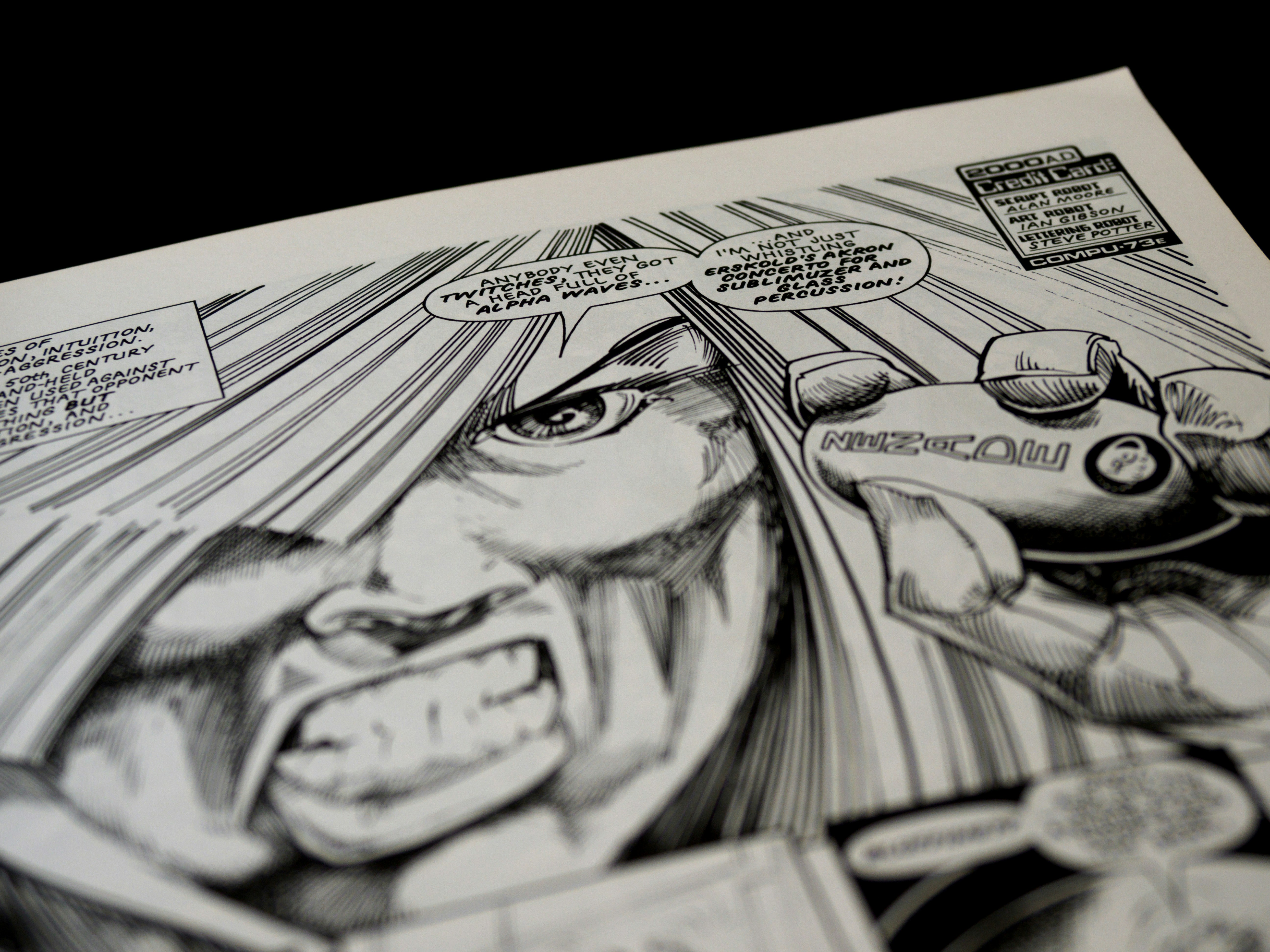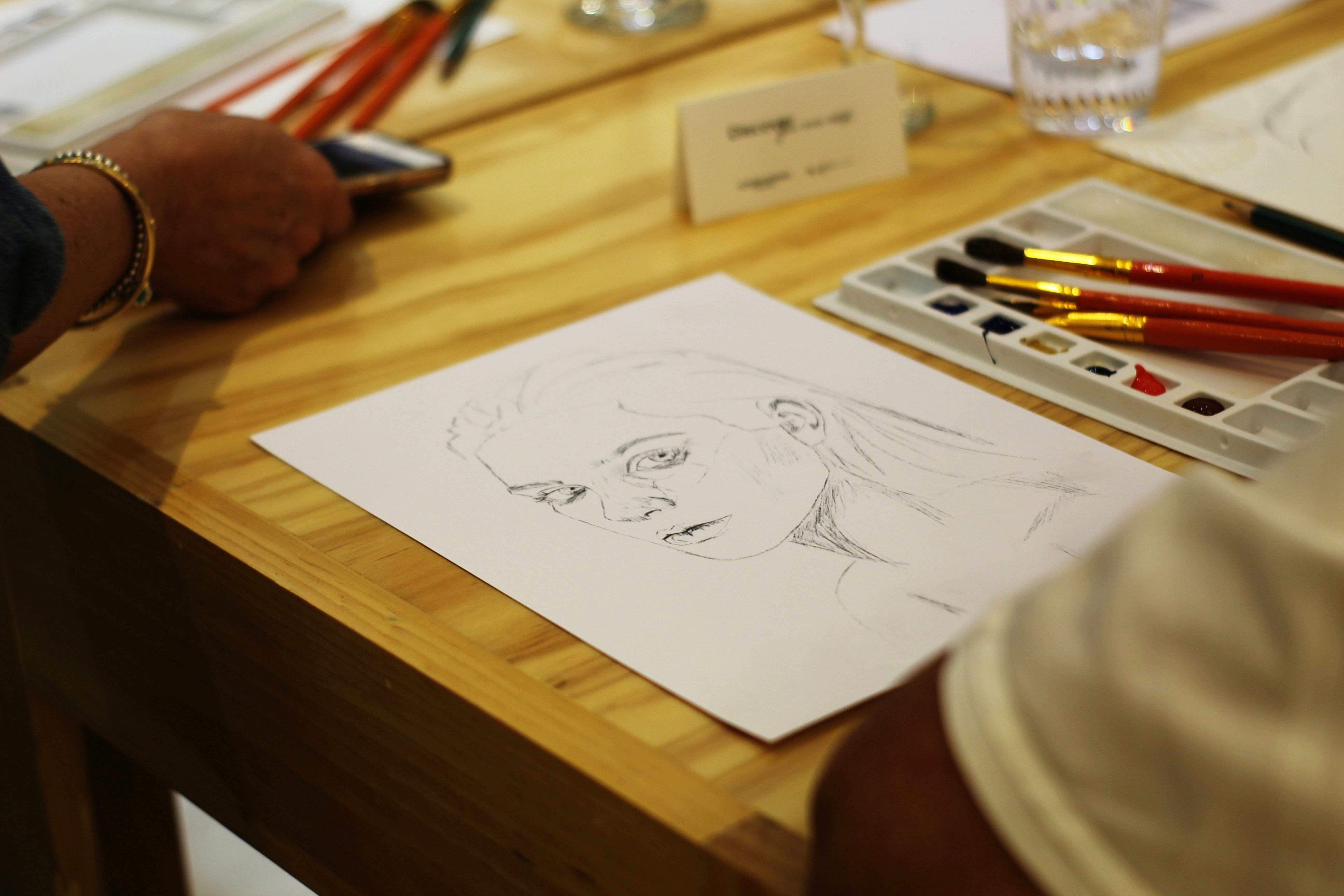11 Essential Tips for Comic Character Design
by WriteSeen
In the world of comic character design, the characters you create need to stand out not just visually, but narratively. Understanding the role and personality of your characters is key to crafting designs that resonate.
We’ll cover essential tips, from silhouettes and color choices to costume details and expressions, ensuring each character you design is memorable and meaningful. Ready to bring your creative vision to life? Here's how.
1. Understand Your Character’s Role
Designing comic characters starts with a clear understanding of their role. Whether they're a hero, a mentor, or the antagonist, their visual design needs to echo their narrative purpose. Let's explore how you can ensure your character's visuals align perfectly with their role.
-
Archetypes are Key: Think of archetypes as a helper to guide your design. A hero might have bold colors symbolizing bravery, while an antagonist could have darker hues hinting at their complex nature. Color plays a crucial part in setting the tone and assisting readers in instantly grasping who the character is.
-
Visual Consistency Matters: From their wardrobe to their physical features, everything should link back to their essential role. A mentor's wise demeanor might be reflected through solemn clothing, evoking age-old wisdom. This kind of consistency across characters ensures a seamless storytelling experience.
-
Evolution Through Design: Characters evolve, and their designs should mirror this growth. An antagonist transforming into a hero might gradually adopt lighter, warmer colors, illustrating their journey without needing dialogue.
Understanding the role helps you set the foundation for a character that isn't just seen but remembered.

2. Create a Unique Silhouette
Silhouettes are the unsung heroes of character design. They give your character instant recognizability and are crucial for standing out in a bustling comic scene. Let's break down how you can achieve this.
-
The Power of Distinct Shapes: Look at characters like Batman; his silhouette is iconic, thanks to the outline of his cape and ears. A distinct silhouette makes your character identifiable even in cluttered panels.
-
Feature Amplification: Focus on unique features that define your character's shape. Whether it's oversized hair or an unusual posture, these elements should make your character identifiable from a distance.
-
Adjustable for Multi-Media: A great silhouette works across various formats. This flexibility ensures your character maintains their impact when transitioning from comic pages to animations or video games.
Designing with silhouettes at the forefront guarantees your character is not just part of the story but an unforgettable presence.
3. Design with Personality Traits in Mind
A character's personality should steer their design. You want their traits to be visually apparent, establishing who they are at first glance. Here’s how to achieve this.
-
Colors Convey Emotion: Use colors to signal personality traits. A vibrant yellow might hint at an energetic spirit, while cooler blues indicate a calm and collected demeanor. It's about painting a story through colors.
-
Shapes Speak Volumes: Draw shapes that match your character’s personality. Angular lines could suggest a rigid or aggressive nature, whereas round forms might indicate warmth and approachability.
-
Express Through Attire: Clothes can reflect traits too. A meticulous character might don a spotless outfit, while a carefree character might sport something more relaxed. These subtleties in design elements make your characters relatable and believable.
By leveraging color, shape, and attire, you're crafting not just a visual design but a full realization of who your character is.
4. Develop a Backstory
A backstory enriches your character design, providing depth and intrigue. It's about leaving visual breadcrumbs that invite the audience to learn more about your characters' past.
-
Symbolic Elements: Incorporate scars, unique jewelry, or specific clothing items that hint at your character’s history. These elements make your design more than just visual, they make it enticing.
-
Balanced Revelation: Don't overdo it with backstory hints. Subtlety keeps the audience guessing and engaged. A scar might be revealing enough without delving into its entire history upfront.
-
Influence of the Past: Let history influence character evolution. Perhaps a character's hardship is visible through worn clothing, but as they grow, their attire reflects newfound resilience or success.
With a thoughtfully crafted backstory, your characters offer more than meets the eye—they deliver stories in every glance.

5. Explore Clothing and Accessories
Clothing and accessories are pivotal to a character's identity. They reflect not just personal style but cultural nuances and personal evolution.
-
Functional Yet Symbolic: Outfits should align with the character's role and environment. A warrior might wear armor adapted to their universe, with details hinting at personal victories or defeats.
-
Accessories Tell a Story: Use accessories as extensions of personality or backstory. A watch could symbolize timelessness, while a pendant might hold familial significance.
-
Show Character Growth: Clothing changes can signify personal development. An increase in ornate designs might reflect growing confidence or power throughout their journey.
Dressing your character with intention deepens their narrative, marrying form with function in a way that resonates with readers.
6. Use Exaggeration Purposefully
Exaggeration in comic character design is about making a statement. It’s not simply about boldness—it's about enhancing visual storytelling through amplified features.
-
Amplify Key Traits: Use exaggeration to spotlight defining features. Whether it's enormous eyes to intensify emotion or exaggerated expressions to convey moods, make these enhancements purposeful.
-
Avoid Over-the-Top Design: Maintain balance with exaggeration. While larger-than-life features can draw attention, excessive embellishments could distract rather than enhance.
-
Perfect for Visual Impact: Think of how exaggeration works wonders in dynamic sequences. A superhero's strong build can be emphasized in action poses, making each movement visually compelling.
When executed mindfully, exaggeration underscores character essence, reinforcing who they are while captivating your audience's attention.
Exaggeration isn’t about distorting reality; it’s about accentuating it to elevate your character design.
7. Focus on the Character’s Expressions
Expressions are the heartbeat of your comic characters. They convey emotions and make your characters relatable. Let's focus on capturing the essence of your character through their expressions.
-
Creating Expression Ranges: Develop a range of expressions that your characters frequently display. This includes everything from joy to anxiety. Keep a consistent style so that each expression feels part of the same character but distinct enough to embody different emotions.
-
Subtlety in Detail: Sometimes less is more. A slight raise of an eyebrow or a subtle frown can speak volumes. These smaller expressions can add depth and keep the reader engaged with the subtext of your story.
-
Expression Sheets: Craft expression sheets that showcase every emotion your character might encounter. This tool aids in maintaining consistency and offers quick reference during the creation process.
Expressions make your character human—or superhuman. By focusing on these nuances, you bring them to life, allowing readers to connect on an emotional level.

8. Iterate and Refine
Iterating on character design is an ongoing journey. The initial concept often evolves, leading to a more polished and impactful design.
-
Sketch and Resketch: Draft multiple versions of your character to explore different facets. Each iteration helps refine elements until perfectly aligned with your vision.
-
Leverage Feedback: Seek feedback from peers and communities, such as those on WriteSeen, to gain diverse perspectives. Constructive critique can highlight areas for improvement you might miss on your own.
-
Adapt to Trends: Stay aware of changing trends in character design. While maintaining your unique style, being adaptable ensures your work remains relevant and engaging across different audiences.
Iteration is about resilience and willingness to improve. Embrace the process, and your characters will continue to grow and resonate powerfully with audiences.
9. Consider Movement and Action Poses
Movement transforms static designs into dynamic characters. Expressing motion effectively makes your comics feel alive and energetic. Here's how.
-
Dynamic Posing: Develop poses that emphasize your character’s traits. Whether they're graceful or robust, the pose should capture that essence. Use references to ensure poses are anatomically believable and fluid.
-
Sequential Flow: Ensure poses transition smoothly from one to the next, especially in action sequences. This flow enhances the visual storytelling, allowing readers to follow the movement effortlessly.
-
Embodying Emotion Through Motion: Movement can be emotional. A slumped posture signifies defeat, while an aggressive stance boasts confidence and power. Capture these nuances in design to reinforce the narrative without dialogue.
With adept motion representation, you provide a richer reading experience. Turn still images into a riveting narrative, engaging readers with every turn of the page.
10. Collaborate for Fresh Perspectives
Collaboration expands your creative boundaries. Working with other creators can spark new ideas, pushing your designs further.
-
Team Dynamics: Engage with writers, colorists, and other artists to bring new dimensions to your character designs. Each professional offers expertise that complements your work.
-
Incorporate Diverse Inputs: Embrace varied perspectives that a collaborative approach brings. Different cultural inputs, for instance, can add authenticity and depth to character backgrounds and appearances.
-
Skills Exchange: While collaborating, exchange skills and techniques. This process enriches your toolbox, offering new methods and ideas that can revitalize your design approach.
Collaboration isn't merely about sharing work; it's about expanding horizons through collective creativity. Together, achieve a sophistication in design that's challenging to do alone.

11. Test Your Design in Various Mediums
Testing your comic character design across multiple mediums ensures its adaptability and breadth. A versatile design resonates no matter the platform.
-
Cross-Medium Adaptation: Assess your character's performance in both print and digital formats. Ensure colors, details, and expressions maintain impact regardless of size or resolution differences.
-
Broad Audience Appeal: Test how your designs appear in different mediums used by diverse audiences. This adaptability can widen the character's reach and draw in a variety of readers.
-
Iterative Improvements: Use testing outcomes to make enhancements. If a particular design element doesn’t translate well across different media, refine it to maintain consistent appeal.
Effective multi-medium adaptation keeps your characters vibrant and engaging, sustaining interest over various platforms and reader preferences.
Adaptation is key—ensuring your characters thrive in every medium makes them timeless and unique.
FAQs on Comic Character Design
Looking for quick answers to your character design conundrums? Here’s a rapid-fire FAQ section.
-
What tools should I use for character design? Tablets and programs like Adobe Illustrator or Clip Studio Paint are industry staples, providing flexibility and precision.
-
How can I balance originality with familiarity? Infuse familiar archetypes with unique twists. It engages readers while providing a fresh perspective.
-
What if I hit a creative slump? Change your scenery or medium, engage with peers for inspiration, or take a break to refresh your creativity.
Grounded in real-world usage, these insights keep your creative momentum going while honing your craft in comic character design.
Conclusion
Effective comic character design goes beyond aesthetics—it’s about infusing narrative purpose into every visual element. From expressive silhouettes to meaningful attire, each choice should reflect who your character is and what they represent. Design decisions rooted in story create characters that resonate long after the page is turned.
The most memorable designs evolve through iteration, feedback, and cross-medium testing. Whether you’re amplifying personality through color or refining poses for dynamic storytelling, your willingness to explore and adapt brings your characters to life in new and powerful ways. Collaboration further elevates this process, offering fresh insight and cultural depth.
At WriteSeen, we celebrate creators who design with intention. Share your characters in a secure, global space built for feedback, collaboration, and discovery. Join our creative community and bring your comic character designs to life—boldly, authentically, and for the world to see.
TAGS